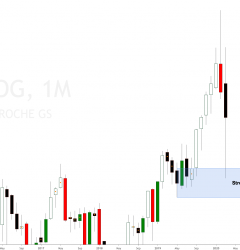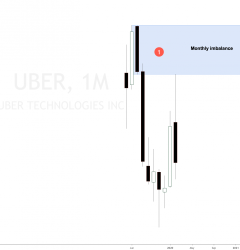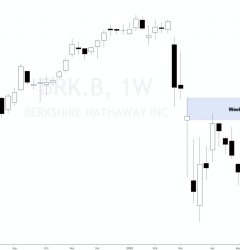10 Sep
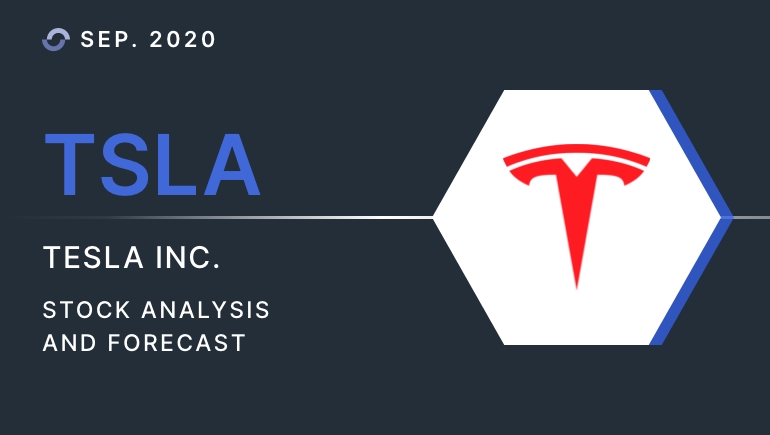
Tesla, Inc (TSLA) has already executed the announced five-to-one stock split to make ownership more accessible to traders, investors and Tesla employees. With the Tesla split, the stock will be more accessible to traders. Tesla shares will trade at around $300 per share once the split is completed, rather than the current $1,600 as of 13th August 2020. The stock could get even cheaper if Tesla returns to the strong monthly demand imbalance of around $142 per share. Take a look at Tesla TSLA monthly timeframe analysis and forecast below for more details.
Tesla stock forecast 2020
As expected and forecasted in the previous, Should I buy Tesla Stock in 2020? posted last 25th March 2020, Tesla Inc (NASDAQ) reacted very strongly to the super-strong monthly demand imbalance, and it’s been rallying since and after the five-to-one split, breaking all-time highs again.
You can buy shares of Tesla stock, but now it’s not a good idea because we expect a correction. Using a high-probability stock trading strategy is critical to succeeding in trading. You can use intraday and short-term stock strategies and options strategies to trade Tesla down to the strong imbalance shown in the monthly timeframe attached.
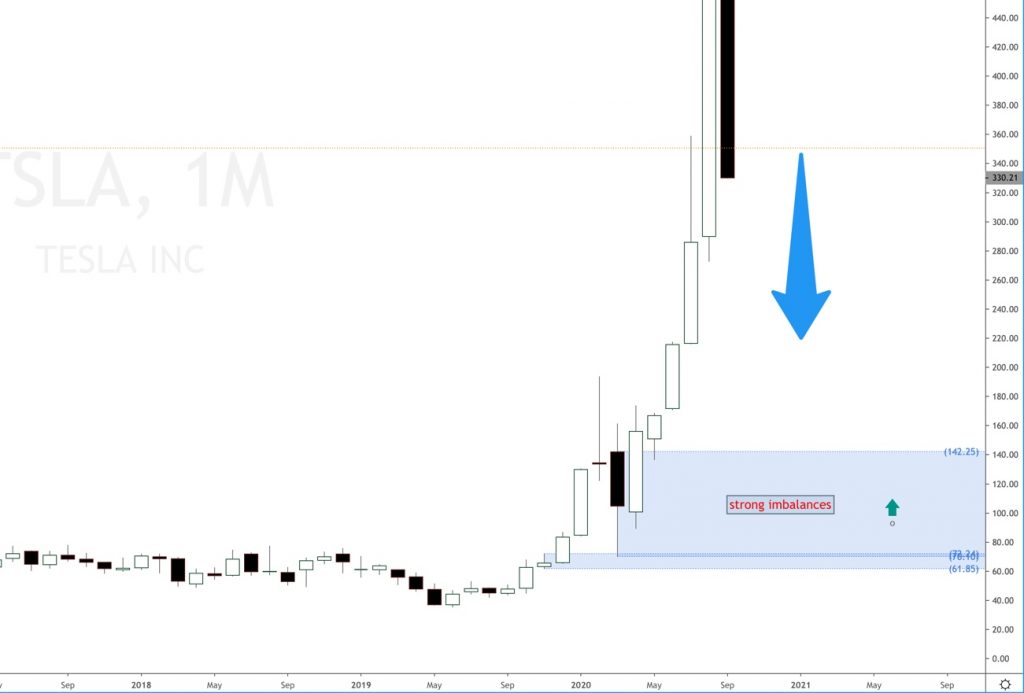
TSLA supply and demand imbalances
As supply and demand traders, we do not need to pay attention to the news, fundamentals or any earnings reports. Once a big timeframe imbalance has gained control, earnings do just the opposite and react strongly to those imbalances. Why do you see positive earnings and then the underlying stock drops like a rock, or a negative earnings announcement and the stock rallies like a rocket out of control? You are probably missing the fact that there are big imbalances in gaining control.
Unless you are doing very short-term trading and scalping, you should not worry about fundamentals or earnings announcements on Tesla stock.
You can use these imbalances to plan your trades in lower timeframes. Trading is just waiting for the right trigger points and scenarios to present themselves, this game has got a name and it’s called the waiting game. We need to patiently wait for the correct scenarios and setups to happen and wait for the price to pull back or dip into the price levels we want to trade, in our case these price levels are made of supply and demand imbalances.
Join our supply and demand stock trading course to learn how to trade using our supply and demand trading strategy.
There are several ways of buying stocks and futures. When trading stocks, you can buy shares of the underlying stock or use options strategies to go long or short at these specific supply and demand levels, long calls or long puts or spreads. You can even buy a CFD (contracts for difference) on Tesla if you are in a country where it’s allowed.
